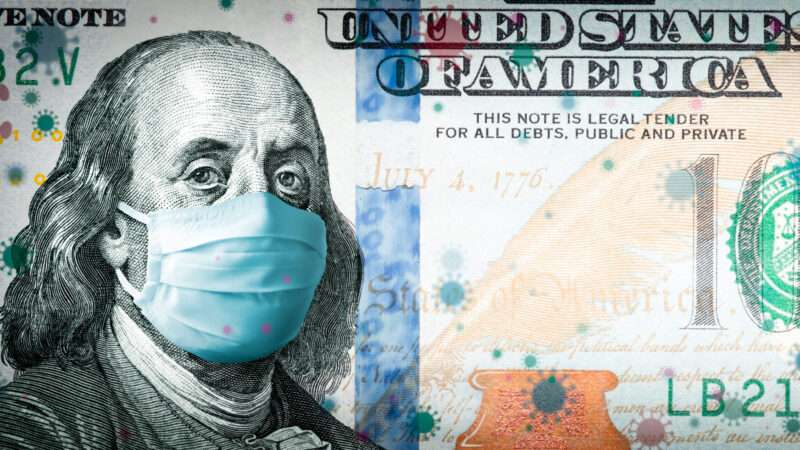
A couple claiming to run a farm that employed dozens of people used fake employee records to get more than $1 million in COVID-19 relief payments when they actually employed no one on a farm that did not exist.
A social media influencer created fake documents to score more than $400,000 in COVID-19 funds meant to help small businesses, then used the money to buy cryptocurrency and gifts for his girlfriend.
A state employee whose job was to stop unemployment benefits fraud helped other fraudsters navigate around fraud prevention systems so they could steal more than $1 million, including federal tax dollars made available to states during the pandemic.
Only now, nearly four years after the federal government approved an unprecedented amount of emergency spending in response to the COVID-19 pandemic, are investigators getting a full picture of all the ways that schemers and thieves raided programs. Congress approved about $4.6 trillion in COVID-19 emergency spending, and so much of it was stolen that auditors now say we’ll likely never have a full accounting of it all.
“When the federal government provides emergency assistance, the risk of payment errors—including those attributable to fraud—may increase because the need to provide this assistance quickly can lead agencies to relax or forego effective safeguards,” the Government Accountability Office (GAO) explained in a new report summing up efforts to recoup stolen funds. “Because not all fraud will be identified, investigated, and adjudicated through judicial or other systems, the full extent of fraud associated with the COVID-19 relief funds will never be known with certainty.”
As Reason has previously reported, auditors believe that about $200 billion was fraudulently disbursed from two programs run by the Small Business Administration (SBA) during the pandemic. That’s about one-sixth of all spending run through the SBA’s Paycheck Protection Program (PPP) and the Economic Injury Disaster Loan (EIDL) program. Additionally, the GAO believes that between $100 billion and $135 billion in federal unemployment funds—provided to states on a temporary basis during the pandemic—were lost to fraud.
One former U.S. attorney has called it “the biggest fraud in a generation.”
It’s far too late to put all those horses back in the barn, but state and federal officials are trying to do what they can. The latest GAO report details those ongoing efforts, including the nearly 1,400 individuals who have been found guilty of fraud connected to COVID-19 relief efforts. As of June, the GAO reported, there had been 1,051 sentences handed down in those cases, often requiring restitution of fraudulent payments. Hundreds of people have been given jail time, including 33 who have received sentences of 10 years or more.
There are more than 500 other cases still pending in the court system, according to the GAO. Congress has extended the statute of limitations on COVID-related fraud to 10 years, so it’s a good bet that prosecutors will be adding to those numbers for quite a while.
But recovering all the lost funds is impossible. In some cases, officials aren’t even trying: The SBA decided earlier this year not to pursue collections actions against individuals who haven’t repaid EIDL loans of $100,000 or less. The SBA says trying to collect those loans would be more costly than whatever might be recouped—and since many of the loans were probably given out fraudulently, tracking down who got what will be extra difficult.
The GAO does not have a running total of how much has been recovered in the form of restitution payments as a result of successful prosecutions, a spokeswoman for the office tells Reason. That’s due in part to the fact that the amount of restitution ordered by the courts and what is actually repaid to the government are often different amounts.
What has been reported, however, leaves a wide gap. For example, the GAO reported in May that states had identified about $55.8 billion in fraudulent and nonfraudulent unemployment overpayments that occurred between March 2020 and March 2023. Of that, about $6.8 billion had been recovered.
Of course, none of these calculations of COVID-19 aid lost to fraud include other types of pandemic-era spending that was clearly wasteful and unnecessary, even if it didn’t meet the legal standard for fraud. Much of the aid delivered to cities and states was blown on frivolities like golf courses or was used to pad public employees’ paychecks. Iowa spent $12.5 million of its $4.5 billion cut of the federal bailout on a new baseball stadium near the Field of Dreams movie set, while Michigan spent $25.6 million on a travel marketing campaign.
The federal and state officials who approved that spending won’t be seeing the inside of a jail cell, even though the distinction between using COVID-19 aid to build a baseball stadium and using PPP funds to buy a luxury car is mostly an aesthetic one.
The post Full Extent of COVID Fraud Will 'Never Be Known With Certainty' appeared first on Reason.com.
from Latest https://ift.tt/l5ags6C
via IFTTT